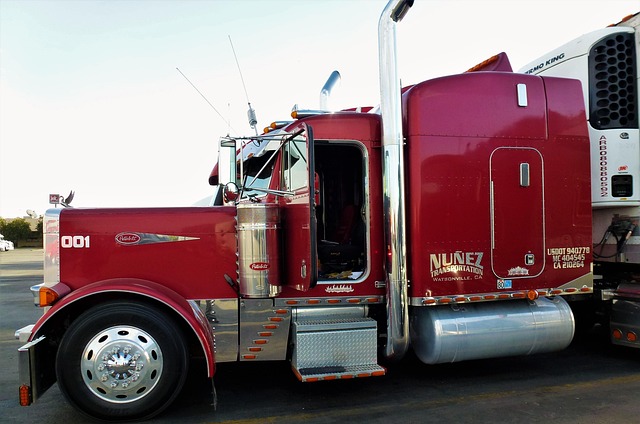Looking to register your car in California? Navigating the process can seem daunting, but understanding each step simplifies the task. This comprehensive guide breaks down the California car registration process, from gathering essential documents for a successful DMV VIN verification to completing the registration and paying fees. By following these steps, you’ll be on your way to securing your vehicle’s legal status in no time.
- Understanding the California Car Registration Process
- Gathering Necessary Documents for DMV Vin Verification
- Step-by-Step Guide to Completing DMV Vehicle Registration
- Payment Methods and Fees for California Car Registration
- What Happens After Successful DMV Vin Verification and Registration
Understanding the California Car Registration Process

Understanding the California Car Registration Process
Registering a car in California involves several steps designed to ensure vehicle safety and roadworthiness. The process begins with a thorough inspection that includes a DMV (Department of Motor Vehicles) vin verification, which checks the vehicle’s history against its unique VIN (Vehicle Identification Number). This step is crucial for identifying any potential issues or outstanding warrants related to the car.
After passing the initial vin inspection, you’ll need to gather essential documents, such as proof of ownership, a valid driver’s license, and current insurance information. Once all required paperwork is in order, you can visit a local DMV office to complete the registration process. Alternatively, many services now offer convenient mobile vin inspection and registration options, allowing you to avoid the hassle of visiting a DMV in person with the help of a mobile vin verifier.
Gathering Necessary Documents for DMV Vin Verification

Before heading to the DMV for car registration, make sure you have all the essential documents ready. The first step in the process is DMV VIN verification, which requires accurate and up-to-date information about your vehicle. Gather the original copy of your vehicle’s certificate of title, as well as its current registration papers (if applicable). These documents are crucial for proving ownership and verifying the vehicle’s identity.
Additionally, you’ll need to provide a valid driver’s license or state ID card and proof of insurance. For convenience, many individuals opt for mobile VIN inspection services, which can save time by performing the vin inspection right at your location. This option is especially beneficial if you’re busy or have limited mobility. Ensure that all documents are in order to streamline the registration process at the DMV.
Step-by-Step Guide to Completing DMV Vehicle Registration

Completing DMV vehicle registration can seem daunting, but with a straightforward step-by-step guide, it becomes an easy process. First, gather all necessary documents, including your vehicle’s registration certificate (if previously registered), proof of insurance, and driver’s license or identification card. Then, visit the California Department of Motor Vehicles (DMV) website to initiate the registration process online. This will involve entering your vehicle’s information, such as make, model, year, and identifying details like the Vehicle Identification Number (VIN).
Next, you’ll need to schedule a DMV appointment or utilize their mobile services for a convenient alternative. For those who prefer a more efficient approach, consider scheduling a mobile VIN inspection where a DMV representative comes to your location to verify your vehicle’s information. This saves time and effort by eliminating the need to visit a DMV office. Once all details are confirmed and any required fees are paid, you’ll receive your new registration documents, ensuring your car is legally registered and ready to hit the California roads.
Payment Methods and Fees for California Car Registration

When it comes to payment methods, the California Department of Motor Vehicles (DMV) accepts various options for car registration fees. You can typically pay using a debit or credit card, but check with your local DMV as some offices may also accept cash or money orders. The cost of registering a vehicle varies based on several factors, including the type of vehicle and its age. For most cars, expect to pay around $50 for a standard registration.
Additional fees might apply if you’re registering a classic car or a vehicle with custom modifications. Moreover, there’s a $25 fee for a DMV vin verification, which is crucial before registering your car. Some services even offer a mobile vin verification option using apps or tools from trusted mobile vin verifier companies, making the process more convenient. Remember to keep your registration current to avoid penalties and ensure your vehicle’s legal status on California roads.
What Happens After Successful DMV Vin Verification and Registration

After a successful DMV VIN (Vehicle Identification Number) verification, the next step is car registration. This process involves submitting all required documents to the California Department of Motor Vehicles (DMV). Your vehicle will be registered, and you’ll receive a registration certificate along with a license plate. This marks your vehicle’s official entry into California’s road network.
A crucial aspect of this phase is ensuring that your car passes the necessary inspections, which can often be done through mobile VIN verification services. These services offer convenient and efficient vehicle inspections by providing an alternative to traditional inspection stations. With just a few clicks, you can have your vehicle checked for any issues, ensuring it complies with California’s safety and emissions standards. This facilitates a smoother registration process.
Registering a car in California is a straightforward process that involves understanding the required steps and gathering essential documents. By completing the DMV VIN verification and following the step-by-step registration guide, you ensure your vehicle complies with state regulations. Remember to choose the appropriate payment method and be prepared for any associated fees. Once successfully registered, you’ll receive the necessary documents, allowing you to legally operate your vehicle on California roads.
